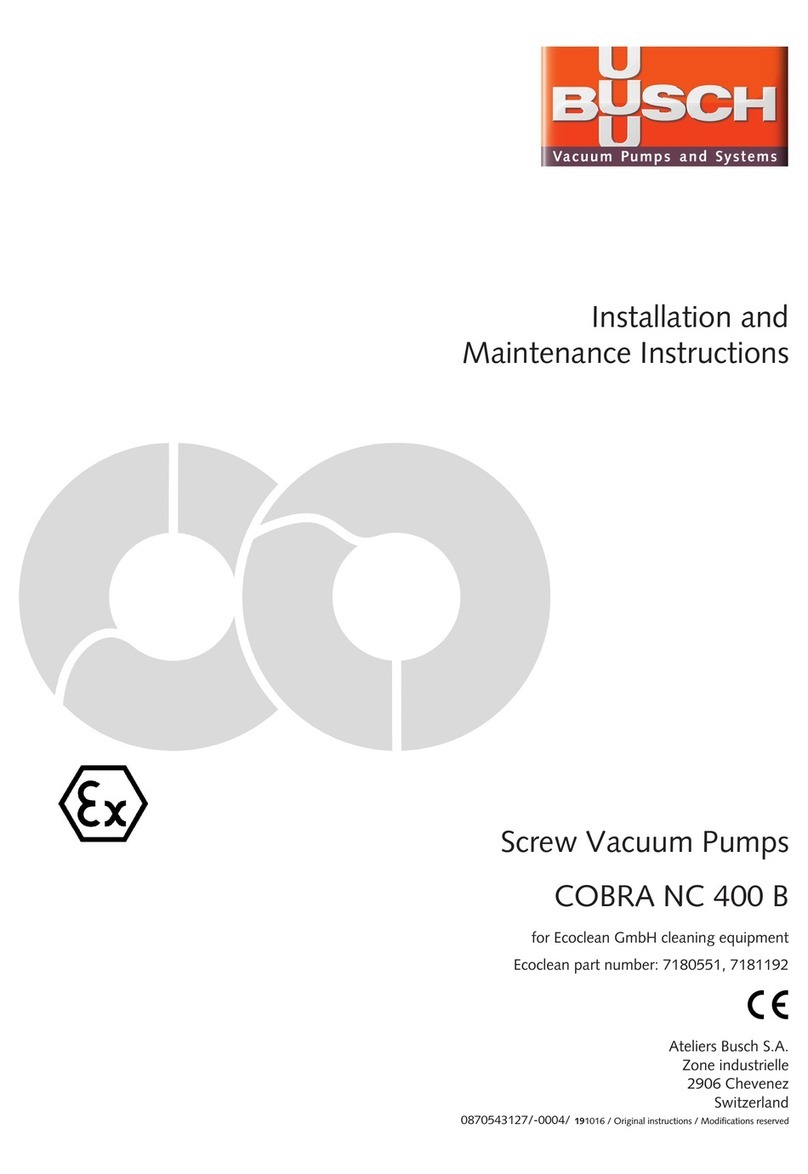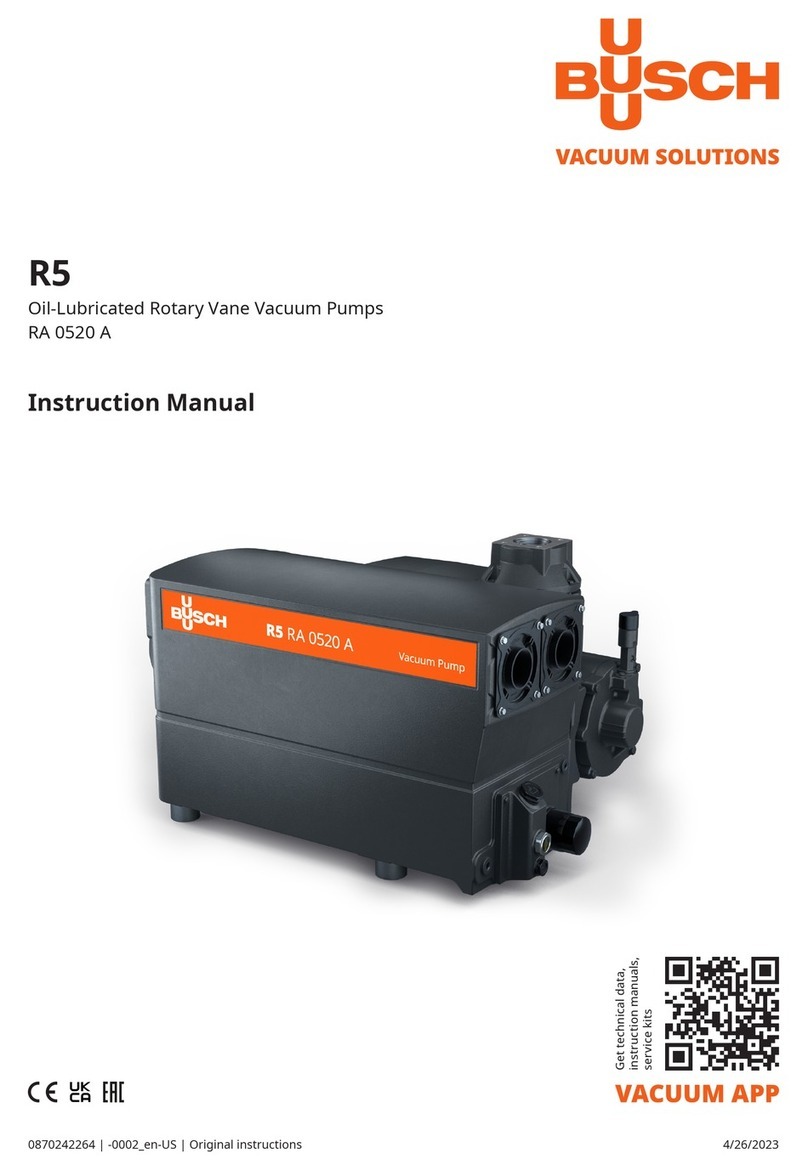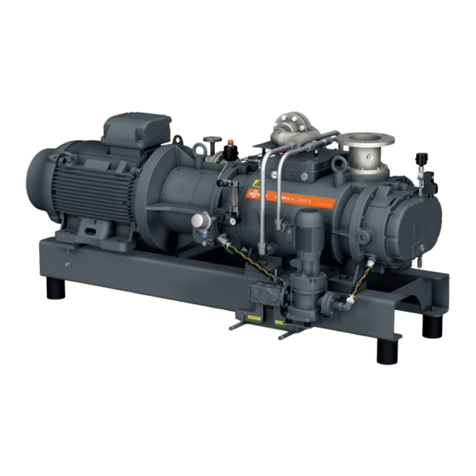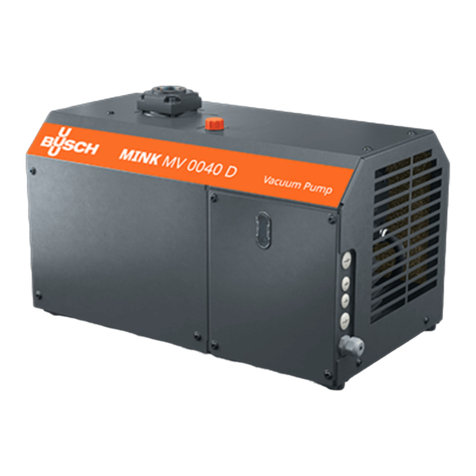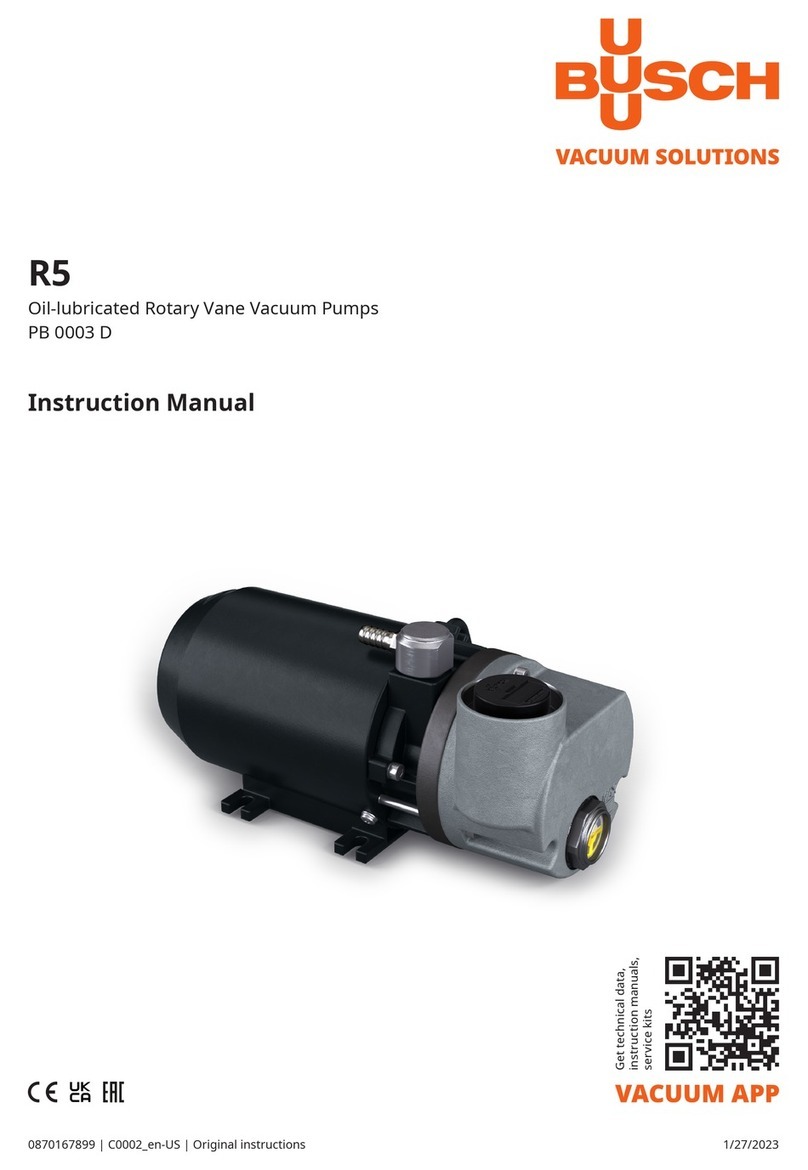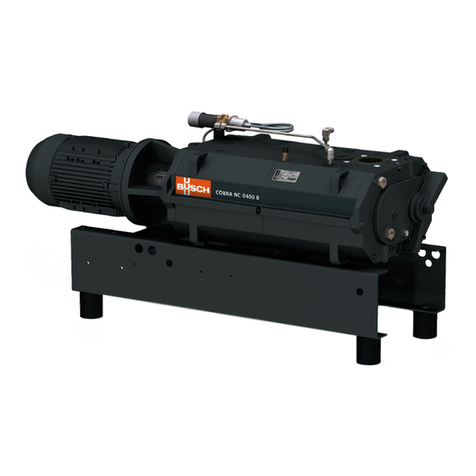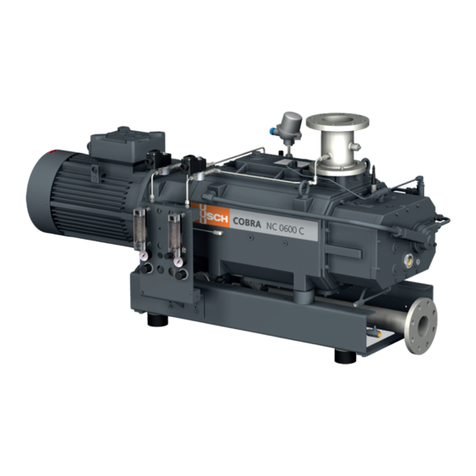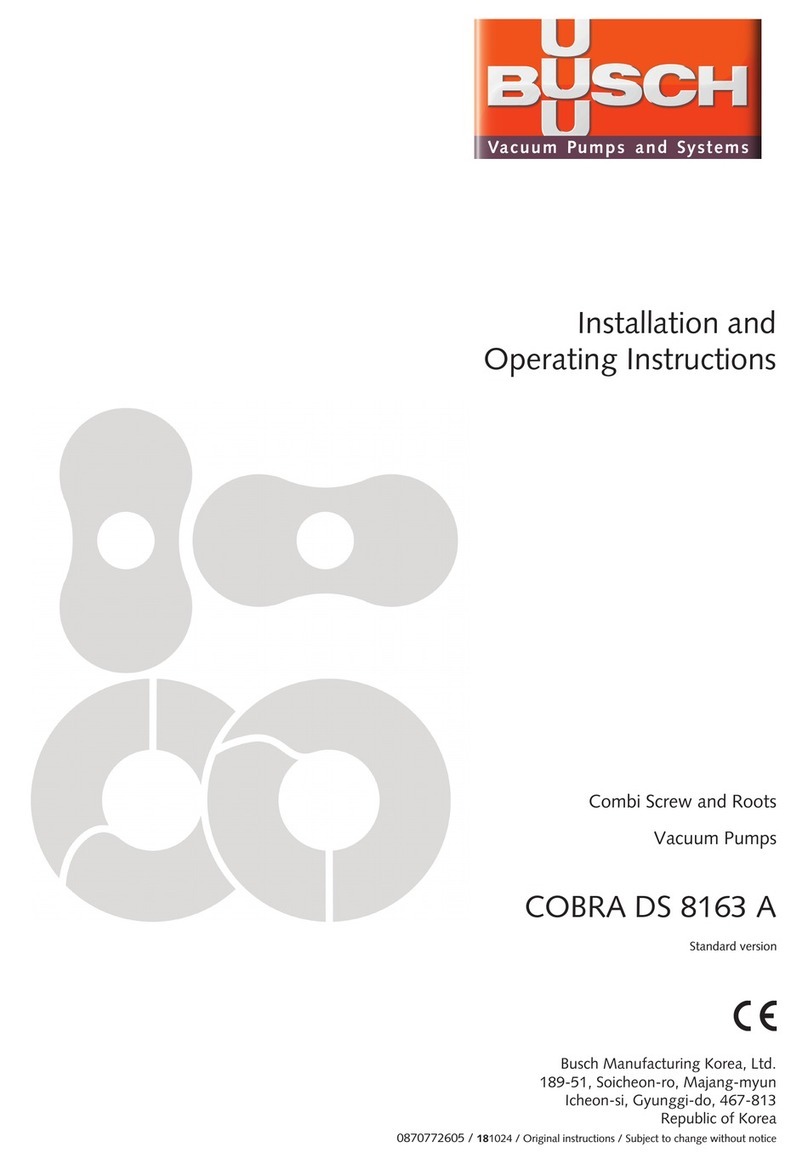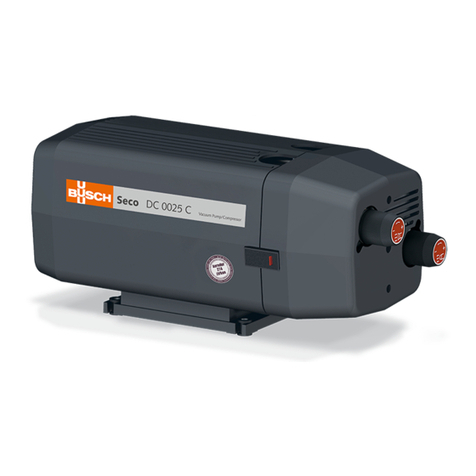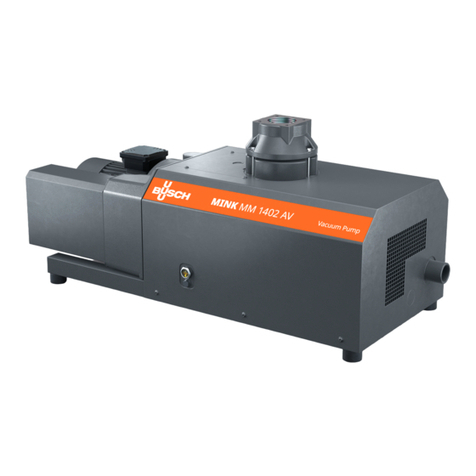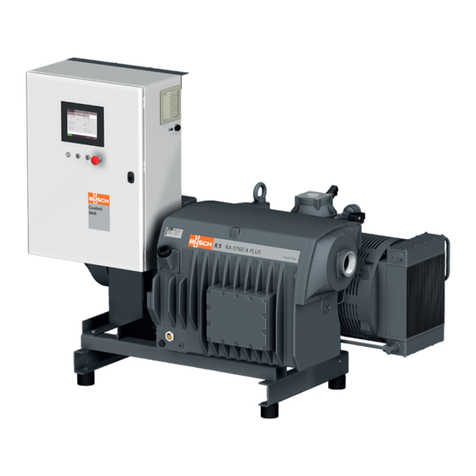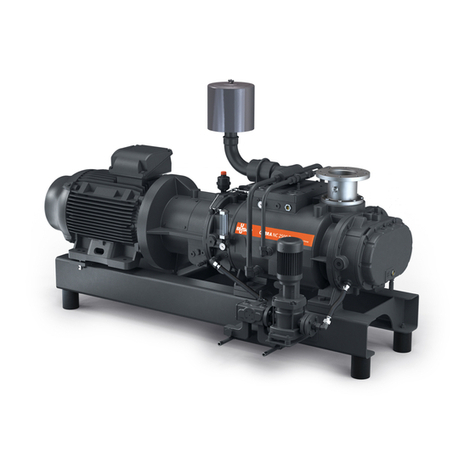
Through the gas ballast valve (470-480) a small amount of ambient air
is sucked into the pump chamber and compressed together with the
process gas. This counteracts the accumulation of condensates from
the process gas inside the vacuum pump (see also “Operation Notes”).
Gas ballast version with ball valve:
The gas ballast line can be closed partially or completely by means of a
ball valve (477).
In order to improve the operating characteristics the outlet of the pump
chamber is equipped with a spring loaded valve (g,159).
Oil Circulation
The vacuum pump requires oil to seal the gaps, to lubricate the va-
nes(n,22) and to carry away compression heat.
The oil reservoir is located on the pressure side of the vacuum pump
(i.e. high pressure) at the bottom of the bottom chamber of the oil se-
parator (f,75).
The feed openings are located on the suction side of the vacuum pump
(i.e. low pressure).
Forced by the pressure difference between pressure side and suction
side oil is being drawn from the oil separator (f,75) through the oil sup-
ply lines and injected on the suction side.
Together with the sucked gas the injected oil gets conveyed through
the vacuum pump and ejected into the oil mist separator (f,75). Oil
that separates before the exhaust filter accumulates at the bottom of
the bottom chamber of the oil separator (f,75).
Oil that is separated by the exhaust filter (l,120) accumulates at the
bottom of the upper chamber of the oil separator (f,75).
The flow resistance of the exhaust filters (l,120) causes the inside of
the exhaust filters (which is connected to be bottom chamber of the oil
separator) to be on a higher pressure level than the outside of the ex-
haust filters (i.e. the upper chamber of the oil separator). Because of
the higher pressure in the bottom chamber it is not possible to let oil
that drips off the exhaust filters simply flow down to the bottom
chamber.
Therefore the oil that accumulates in the upper chamber is sucked by
the level switch (m,194) through the oil return line (290) right to the
suction connection (250).
Cooling
The vacuum pump is cooled by
–the ambient air around the vacuum pump, including oil mist sepa-
rator (f,75)
–the air flow from the fan wheel (400)
–the conveyed gas
–the air flow from the fan wheels (321,322) on the shaft of the va-
cuum pump
Operational Options / Use of
Optionally Available Equipment
In order to facilitate the start of the pump, an offloading valve (optio-
nal) with an exhaust line can be installed.
To control the oil level in the oil mist separator, an oil level switch is
mounted in the oil mist separator (as operational option).
In case of unfavourable temperature conditions, a heat exchanger (wa-
ter-oil) can be mounted as a complementary cooling (optional).
To suck condensable vapours, a gas ballast valve (optional) can be ins-
talled in the cylinder cover at fan side. To increase the capacity of va-
pours, another gas ballast valve can be installed in the cylinder cover at
the motor side. The valve can open or close the gas ballast during the
operation of the pump.
In order to ensure the best ultimate pressure during the process, a sole-
noid valve (optional) can be installed before the gas ballast valve. The
solenoid valve can be used as a purge at the end of the process.
On/Off switch
The vacuum pump comes without on/off switch. The control of the
vacuum pump is to be provided in the course of installation
Safety
Intended use
DEFINITION: : For the purpose of these instructions, “handling” the
vacuum pump means the transport, storage, installation, commissio-
ning, influence on operating conditions, maintenance, troubleshooting
and overhaul of the vacuum pump.
The vacuum pump is intended for industrial use. It shall be handled
only by qualified personnel.
The allowed media and operational limits according to the “Product
Description” and the “Installation Prerequisites” of the vacuum pump
shall be observed both by the manufacturer of the machinery into
which the vacuum pump is to be incorporated and by the operator.
The maintenance instructions shall be observed.
Prior to handling the vacuum pump these operating instructions shall
be read and understood. If anything remains to be clarified please
contact your Busch representative!
Safety notes
The vacuum pump has been designed and manufactured according to
the state-of-the-art. Nevertheless, residual risks may remain. These
operating instructions inform about potential hazards where appro-
priate. Safety notes are tagged with one of the keywords DANGER,
WARNING and CAUTION as follows:
DANGER
Disregard of this safety note will always lead to accidents with fa-
tal or serious injuries.
WARNING
Disregard of this safety note may lead to accidents with fatal or se-
rious injuries.
CAUTION
Disregard of this safety note may lead to accidents with minor inju-
ries or property damage.
Emission of Oil Mist
CAUTION
The non-OEM spares market offers exhaust filters that are geome-
trically compatible with Busch - vacuum pumps, but do not feature
the high retention capacity of genuine Busch-exhaust filters.
Increased risk of damage to health.
In order to keep the emission on the lowest possible level only ge-
nuine Busch-exhaust filters shall be used.
The oil in the process gas is separated to the greatest possible extent,
but not perfectly.
CAUTION
Aspiration of gas conveyed by the vacuum pump over extended pe-
riods can be harmful.
The room into which the gas conveyed by the vacuum pump is dis-
charged must be sufficiently vented.
Safety
Page 4
